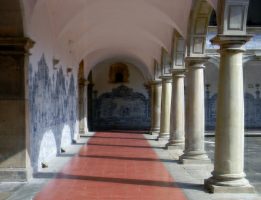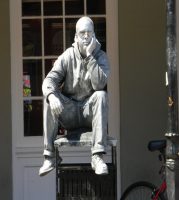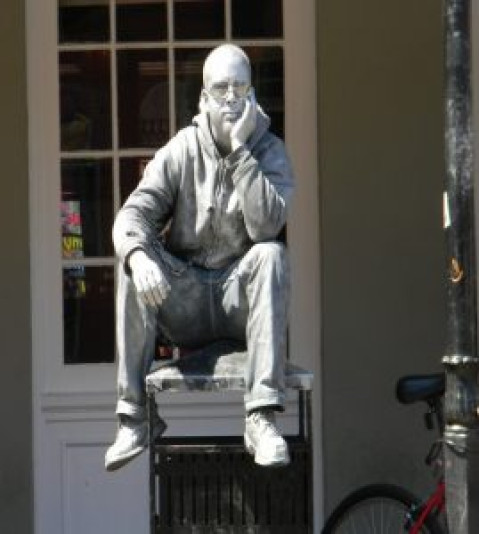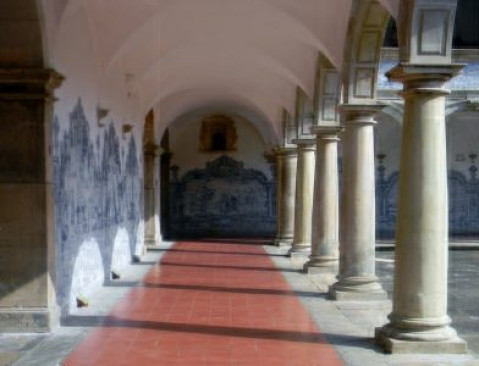Widgetized Section
Go to Admin » Appearance » Widgets » and move Gabfire Widget: Social into that MastheadOverlay zone
The Public Service Renaissance: The Only Door That Stays Open
The views expressed are those of the author and do not necessarily reflect the views of ASPA as an organization.
By Lisa Saye
November 27, 2017

A Public Service Renaissance
I believe governmental structures the world over are in a renaissance. You’re probably reading this and thinking I give public service way too much credit if I dare to compare government’s many stumbles to lasting enlightenment. I, like you, have read the literature, viewed the art, watched the videos, sat through the movies and admired the menu of Renaissance leaders and their many accomplishments. And, I, like you, can recount other renaissance or rebirth periods that were more local, some before the Middle Ages and some like the American Renaissance (1876-1917) and the Harlem Renaissance during the 1920’s that happened much later. These Renaissance were a part of the hands that opened the door to modernity and shared discovery that helped to make the world into what is today.
But ask yourself if the air doesn’t feel or hasn’t felt differently in the past few years. Technology is not the only contributor here, rather recessions, wars, civil strife, elections, selections and every other -ism you can conjure up can be cited as responsible for forming our current public service renaissance. But today’s renaissance is little noticed because it didn’t ride through the streets on a mountain of noise. For public servants, it’s been a low-level whisper of rebirth that can be found in the little known writings of committed authors, the case studies capturing new demographics and the urging of public service colleagues to quantify more data in an effort to better serve the public. It’s more individual than local and more local than regional. I don’t want to call it change because change is what it will eventually become. It’s a rebirth, a shaky uniqueness that government and its public servants must be different if we are all to become the difference. The narrative that accompanies this new wave of renaissance is unique as well. It includes the push for civic tech as a government tool and resource while insisting we really listen, for the first time, to those we pick over when we make laws and build programs that have done little to help. I would venture a guess that if you are reading this in Africa, Asia, China, India, U.A.E, the U.K., Haiti, Fiji, the U.S. or anywhere else in the world, that you can find some agreement about what’s happening and what’s about to happen.
Before I go any further, I want to acknowledge a few times other authors mentioned government and renaissance in the same sentence. In 1977, Norman Beckman in his article, “Policy Analysis in Government: Alternatives to Muddling Through,” wrote that governments that were “resistant to change, are in a renaissance.” In 1980, Tom Burns in his article, “Sovereignty, Interests and Bureaucracy in the Modern State,” called the State “the greatest artifact of the renaissance.” Whether Burns was expanding on Beckman’s discussion of renaissance is not known, but the clear takeaway from both scholars is that there is a link between public administration and notions of renaissance.

Millennial Rodin. Photo Title and Photograph by Lisa Saye (Street Performer, New Orleans, Louisiana)
Think About Everything
Nearly every discussion that looks at a movement or some aspect of history has to begin with a definition. Perhaps the best description of the public service renaissance of late began as a description of something else. At a 1974 International Conference in Honolulu, Hawaii on Integrated Communication for Rural Development, George H. Axinn, in his presentation entitled, “Rural Renaissance—A Perspective and a Process,” unintentionally gave the world one of the best contextual descriptions of renaissance when he defined rural renaissance as “the marriage between traditional patterns and those innovative patterns which result in the birth of change.”
Max Weber couldn’t have said it any better. Axinn described the very actions that public administration should employ when creating new processes and procedures. Sounds simple enough, but if we are not aware of the useable remnants of traditional patterns, how then can we identify innovative ones? I have an idea. We can cheat off the plans used by other governments. Edward Gibbons, in his 2003 book, The Decline and Fall of the Roman Empire, noted how emperors Nerva, Trajan, Hadrian and the Anonnines, carefully preserved “the forms of civil administration” they inherited from 96 A.D. to 192 A.D. So, step one-preserve traditional forms of government, particularly those that worked best for everyone.
We can also borrow procedures and other methodology in our quest to combine the old with the very new. We can call on Professor Ben Kiregyera of Uganda, who in 2010 in an invited paper entitled, “The Evidence Gap and its Impact on Public Policy and Decision-Making in Developing Countries,” challenged us to add to our toolbox of decision-making “statistical renaissance” in the form of evidence-based data that inform the planning and program implementation process. The list of people, measurements, theories and quantities goes on and on. To find our own area of rebirth means we must turn our gaze toward that public issue where our talents are most needed and in doing so, awaken our own renaissance.
Images: All images were taken by Lisa Saye. First Image is of the Sao Francisco Church and Convent in Salvador da Bahia, Brazil (Inner Court Walkway).
Author: Lisa Saye is Executive Director of The Policy Analysis Institute. She served as Fulbright Specialist in Phnom Penh, Cambodia and as International Consultant for the United Nations Development Program in The Maldives. Saye earned her Master’s in Human Resource Management from Troy University and her Doctorate in Public Administration from The University of Alabama. She can be reached at [email protected].






 (15 votes, average: 4.87 out of 5)
(15 votes, average: 4.87 out of 5)
Oluwatoyin Akinkuotu
January 4, 2018 at 11:07 am
Prof Saye,
The article – “The Public Service Renaissance: The Only Door that Stays Opens” has again gone to the very root of Public Administration and Democracy since the Social Contract Theory of Hobbes, Locke and Rousseau through the theories of Sovereignty, Liberty, Equality, Monarchy, Aristocracy to modern Democracy. The Public Service has been in perpetual renaissance. This is innovative, Prof.
Jennifer Ani
December 8, 2017 at 8:50 pm
This article was very informative and I learned a lot.
Dr. Lisa Saye
December 11, 2017 at 9:00 pm
Thanks, Jennifer. Always appreciative of your comments.
Kelvin George
December 6, 2017 at 1:34 pm
I have always uses the word Renaissance when speaking about the evolution of society. With your eloquence and well structured article I have developed a better appreciation for where we are as a Society and civilization. Are we reliving the pass or continue to advance creating memories and impacting society so in the future our contributions will be analyzed in the same way. Thanks Dr. Saye. I look to your worthy contributions in this trying times. Kelvin
Dr. Lisa Saye
December 8, 2017 at 6:56 pm
Kelvin, your comment represents a concise and worthwhile lesson on our present condition and I appreciate you posting it.
Rukaya Mohammed
December 3, 2017 at 3:37 pm
Great and insightful article Dr. Saye. Thanks for the hard work.
Dr. Lisa Saye
December 8, 2017 at 6:54 pm
Thanks so much for your support, Rukaya.
Marquice Robinson
November 28, 2017 at 7:04 pm
Dr. Saye another interesting and insightful piece of work. Your attention to detail and the knowledge you share into the world of Public Policy and Administration is great service for us all. Great job!
Dr. Lisa Saye
December 4, 2017 at 6:46 pm
Much obliged, Marquice!
Abeer Alsadoudi
November 28, 2017 at 2:34 pm
Great article, but i believe that the public sectors are the least sector achieves the Renaissance.
Dr. Lisa Saye
December 4, 2017 at 6:48 pm
Thanks, Abeer. Hopefully we can change that.
Hassan Elkatawneh
November 28, 2017 at 2:05 pm
It may be natural that human societies are constantly changing, and since man is capable of learning, it is natural that renaissance occurs in those societies, but the degrees of renaissance are vary among societies. As change is normal, it may be natural. But there is a renaissance that meets the needs of the times, and a slow renaissance that does not keep up with the needs of the times. Thus, we find that these societies are characterized by backwardness from the rest of the developed societies. The best examples can be applied to this emerging theory in North Korea and the Republic of Egypt, where the revolution has been achieved by the military sector, while the renaissance in the other public sectors are in a constant decline.
Dr. Lisa Saye
December 4, 2017 at 6:50 pm
Thanks so much for your comment, Hassan. Change is indeed constant and if we desire, so can public sector renewal.
Paul B. Mohr,Sr.
November 28, 2017 at 10:38 am
Thanks for reminding us:To find our own area of rebirth means we must turn our gaze toward that public issue where our talents are most needed and in doing so, awaken our own renaissance.
Dr. Lisa Saye
December 4, 2017 at 6:51 pm
Your comments are always welcomed, Dr. Mohr.
Mike Nwosu
November 28, 2017 at 2:45 am
Congratulations on this beautiful piece. It is uncommon, methodical and insightful. It came with oracular certitude of a guru in Public administration issues.
You have enriched my knowledge.
Dr. Lisa Saye
December 4, 2017 at 6:52 pm
Thanks so much for your kind sentiments, Mike.